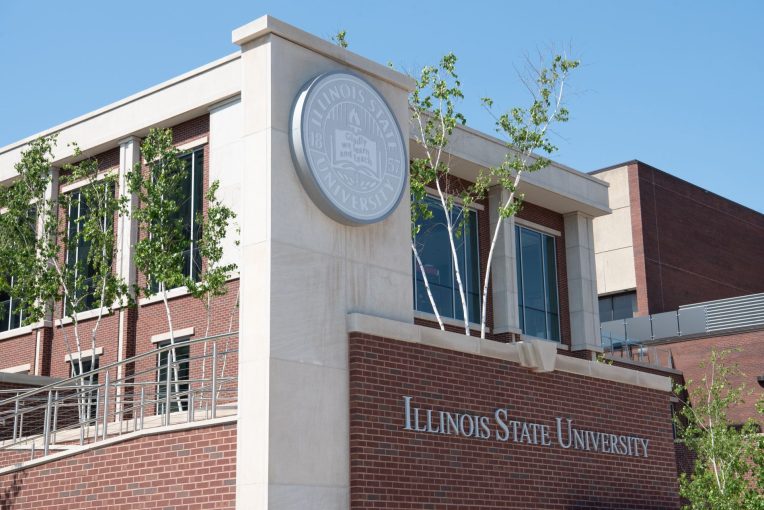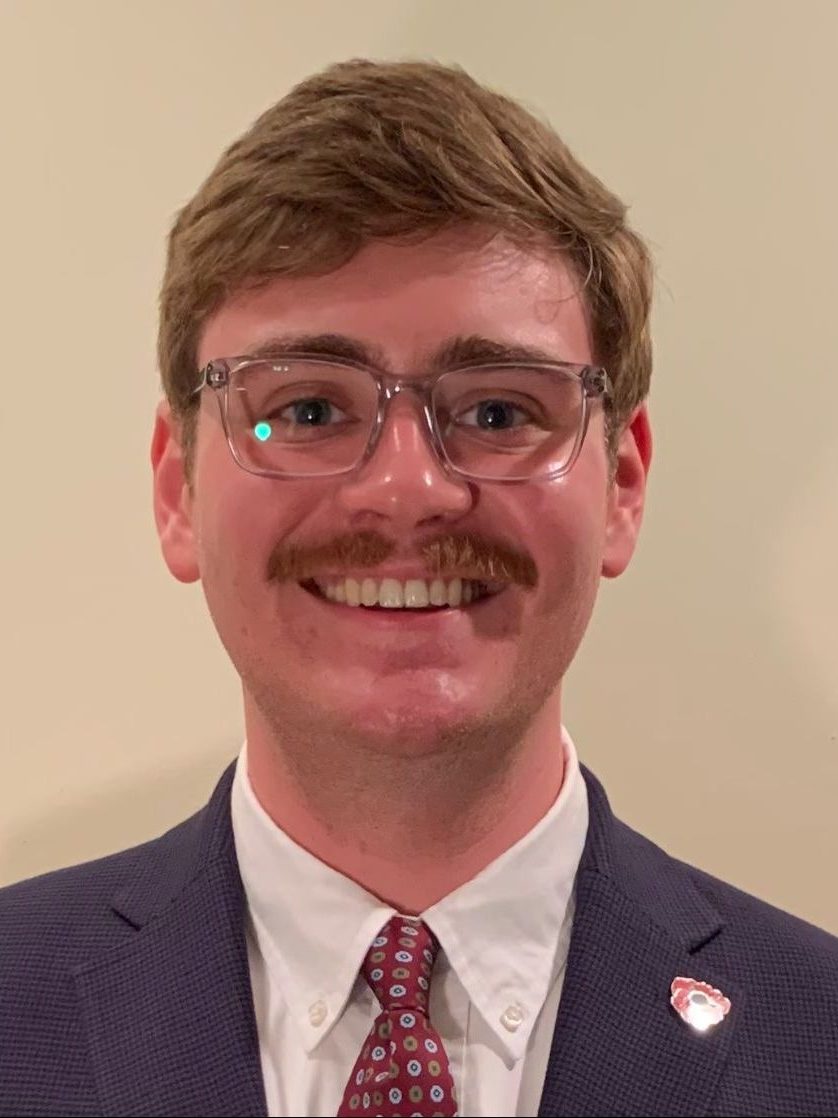The James L. Fisher Outstanding Thesis Competition is designed to promote recognition of graduate theses of the highest quality from each college.
The 2022 competition was open to students who have earned their master’s degree and completed their thesis within the calendar year from July 1, 2021, to June 30, 2022. The following are the college and University recipients.Matthew H. Nalefski, University Winner
M.A. in History
Thesis: The Revolution’s Abolitionist Promise: America’s Interdiction of the Atlantic Slave Trade and the Long Road to Emancipation, 1820-1862
Thesis Committee: Dr. Ross Kennedy (Co-Chair); Dr. Ronald Gifford (Co-Chair); and Dr. Stewart Winger
Thesis committee member Dr. Stewart Winger describes what Matthew is working on during his thesis studies. Matthew is studying the history of antebellum America and uses a truly impressive array of sources that includes dozens of court cases, newspapers, letters, and government reports, as well as an exhaustive number of secondary sources, all in service of his examination of the federal government’s commitment—or lack thereof—to the international antislavery cause. He also included several interesting and enlightening appendices that were themselves extensive enough to warrant their own introduction. Matthew is tackling the idea that the federal government in the antebellum period was in thrall to a “slave power” that so successfully stifled efforts to end slavery that the issue was rarely even mentioned in the halls of Congress. Looking to the seas, Matthew argues persuasively that the U.S. federal government was working hard as a nation among nations to cooperate with the elimination of the trans-Atlantic slave trade led by England and supported by other European and African nations.
Matthew’s thesis explores the U.S. commitment to the destruction of the international slave trade following its abolition in 1808, studying its impact on U.S. sovereignty, the coming of the Civil War, and abolitionism. Long ignored by historians, the United States’ attempts from 1808 to 1862 to abolish the illegal international trade in slaves has the potential to change the historiographical understanding of abolitionism in the antebellum period. Slavery was not eradicated overnight, a fact that we accept unquestioningly, but neither was the international slave trade. The parallel evolution of abolitionism, on the one hand, combined with diplomatize, legal, and antislavery mechanisms related to the slave trade on the other, ultimately created the necessary elements for the institution’s eventual abolition altogether. Ignoring attempts to stop the international slave trade has obscured the complexity of abolitionism in the United States. Emphasizing the United States’ commitment to slave-trade suppression means complicating the picture of an entirely acquiescent U.S. government, which served as the slavocracy’s puppet, and demonstrates that in the end, the revolution’s abolitionist promise was fulfilled
Quynh Nhu Nguyen, University 1st Runner-up
M.S. in Applied Statistics
M.S. in Quantitative Economics
Thesis: Statistical Modeling of Data Breach Risks: Time to Identification and Notification
Thesis Committee: Dr. Maochao Xu (Chair) and Dr. Pei Geng
The thesis chair Dr. Maochao Xu explains what Nhu is working on during her thesis studies within statistical modeling of data breach risks. Nhu completed her master’s degree in the economics department at Illinois State and then continued her studies in statistics in the math department. Her thesis focused on the emerging risk—Data Breach Risk, one of the most devastating risks imposed on society and its citizens because they can cause severe consequences. This includes breaches that disclose personally identifiable information and enterprise secrets, bolster identity frauds, and cause major financial losses. According to the National Conference of State Legislatures, legislation has been enacted by all the states and U.S. territories that requires a data breach notification after the breach incident. Due to the unique nature of cyber risk, the breach is often discovered after several days, months, or even years. The longer a breach goes unaddressed, the more data gets leaked and the larger the overall impact—financial and otherwise.
It is very challenging to predict the cost of a cyber incident owing to the complex nature of cyber risk. However, it is inevitable for insurance companies to offer cyber insurance policies. The time to identify an incident and the time to notice the affected individuals are two important components in determining the cost of a cyber incident. In this work, Nhu initialized the study on those two metrics via statistical modeling approaches. Nhu proposed a novel approach to imputing the missing data and further developed a dependence model to capture the complex pattern exhibited by those two metrics. The empirical study showed that the proposed approach has a satisfactory predictive performance and is superior to other commonly used models.
Melissa L. Quimby, College Winner
M.S. in Applied Community and Economic Development (Sociology)
Thesis: Aid Worker Burnout as Injury: Policy Implications for the Aid Sector
Thesis Committee: Dr. Michael L. Dougherty (Chair); Dr. Chris Wellin; and Dr. Marion Willetts
Melissa’s master’s thesis focused on the phenomenon of burnout among humanitarian and development aid workers, an interest borne of her own career in humanitarian aid and the burnout she experienced personally and witnessed around her. According to her Thesis Committee chair, Dr. Michael L. Dougherty, Melissa sensed that there was something unique in the character of the burnout experienced in the aid sector, and she set out to understand it and devise policy interventions to address it. Melissa collected a considerable amount of rich qualitative data, drawing on her extensive professional network. The chief insight of her thesis research was that structural conditions in the aid sector, broadly speaking, which have the systems of funding at their root, provoke a disproportionate amount of burnout among humanitarian aid workers. She identified other, more visible factors as well—the stress of the work, and the corporate culture of individualism, and machismo, among others. But the identification of the “hidden” sectoral factors makes a non-trivial contribution to the sociology of organizations literature.
Melissa investigated the concept of burnout as an “injury” inflicted upon workers by poorly structured organizations in a highly competitive sector. This research explores the motivational factors that lead a person to a career in aid work and which organizational-based strategies they feel best prevent the symptoms.
Bethany N. Wohrley, College Winner
M.S. in Agriscience
Thesis: Pennycress Establishment in Response to Management of Corn Residue and Harvest Date
Thesis Committee: Dr. Nicholas Heller (Chair); Dr. Ken Smiciklas; and Dr. Bill Perry
Bethany’s master’s thesis focused on cover crops and how they are a key management strategy for mitigating the negative environmental impacts of agriculture. However, only 3% of Illinois crop acres report planting cover crops, largely due to a lack of direct financial incentive. Pennycress (Thlaspi arvense L.) is a cash cover crop that could provide a solution to this problem by providing environmental benefit as well as an economic return. Although it has achieved profitable yields in clean, well-managed breeding plots, pennycress faces establishment challenges when planted after corn in an agricultural setting. Therefore, the objective of this research project was to evaluate different agronomic management strategies to improve pennycress growth in the field conditions following corn harvest.
Thesis Committee chair, Dr. Nicholas Heller, said that Bethany is a determined researcher who did a lot of field research for her thesis studies. Field research involves some unique challenges that Bethany tackled in stride. She dealt with obstacles in machinery and weather and still got her project planted each spring when supplies were hard to come by. She weeded, watered, and took data all year—corn in the spring and summer, pennycress in the fall, winter, and spring, and soybeans that summer and fall. She hand-harvested and processed her samples for each segment of the project. Beyond just agriculture, the importance of Bethany’s research extends to addressing anthropomorphic eutrophication, climate change, reducing fossil fuel use, and increasing profits for farmers. Bethany worked with pennycress, which will be utilized as a cover crop to reduce nutrient loss from fields, but unlike traditional cover crops, pennycress produces oilseeds which will be harvested and sold to make farmers more money while applying no synthetic fertilizer. An important part of her analysis was precision agricultural technologies to study the whole system, including the cash crops on either season adjacent to the pennycress crop, and her use of multivariate data analysis to make sense of the immense amount of data she collected.
An outstanding thesis from a master’s degree program will be sent to a regional competition sponsored by the Midwest Association of Graduate Schools. Entering the regional competition will promote a positive image of graduate education at Illinois State University to its neighboring institutions and provide student recognition.




